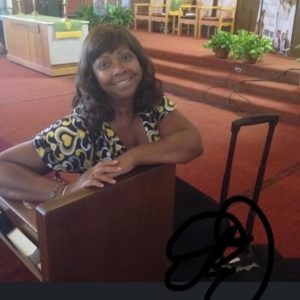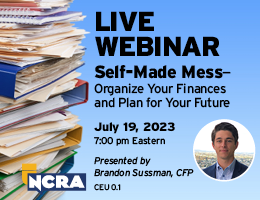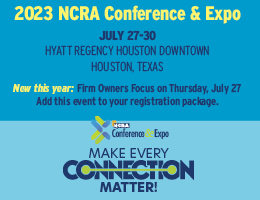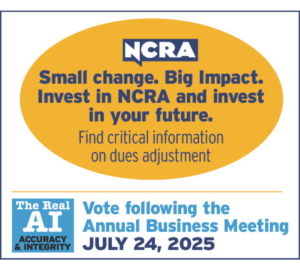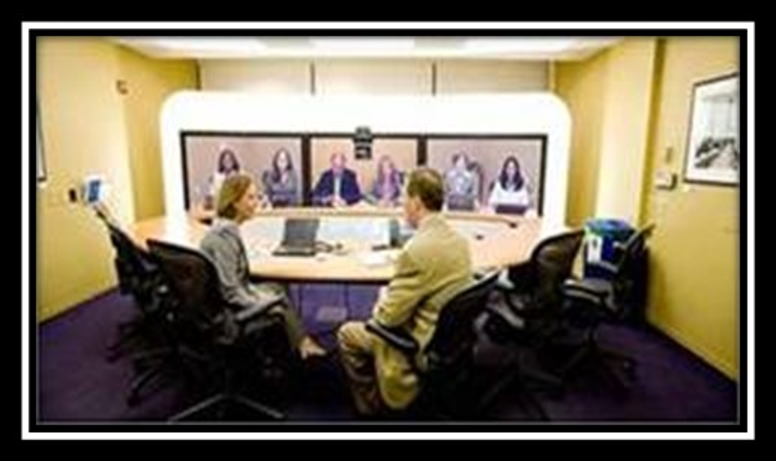
By H. Allen Benowitz
In the March 29 Miami Herald, on the sports page, I came across the article “Video conferencing lets Dolphins connect.” A few pages later, I came across another article, “Children with mental health needs getting help with telemedicine.”
It reminded me that our profession formed the first videoconferencing (VC) network in the nation for the legal profession, which eventually applied to numerous business, educational, and medical applications. I remembered how a few court reporting firm principals invested money, time, energy, and — ironically — travel to meet for more than six months before committing to a serious investment in a little-known industry in December 1989. Since we met in the winter, I had no difficulty convincing all that we should meet at my state-of-the-art video conference center in Miami, Fla., to enjoy the sun.
It was called LINC for Legal Image Network Communications after numerous names were bandied about. Because Dave Jackson observed that I took meticulous notes, he suggested I become president; thus I was the founding president of LINC. In conjunction with the National Shorthand Reporters Association (the previous name for the National Court Reporters Association), and a then-newly established Committee to Study Video Conferencing, headed and comprised of various members and yours truly who chaired its endeavors, our main initial goal was to persuade and convince many that a videoconferenced, videotaped deposition was not going to replace court reporting jobs as well as developing its applications in other markets. As time went on, simultaneous videoconferencing of remote, stenographically reported depositions became an essential part of the legal and litigation process on behalf of our attorney clients to preserve same for court presentation in addition to the official record or the simultaneous stenographic recording and transcript. It’s still difficult to replace the human interface in many technologies today. People: 1; Machines: 0.
Our LINC network grew to 28 independent video conference centers. We were more than a third of U.S. Sprint’s 66-room Meeting Channel VC network at the time. Together with Sprint as LINC’s co-marketing partner, we eventually had connectivity with more than 6,000 VC rooms worldwide before its eventual exponential growth. Who knew then that remote videoconferencing would eventually become a star in bringing people together worldwide for safe virtual meetings in the face of our planet’s most dangerous pandemic, COVID-19?
Some of the early VC systems which we experimented with before settling on a standard for our network were VTEL, Polycom, Sony, Lifesize, etc., through various resellers. Our line carrier, U.S. Sprint, hosted its brick-and-mortar Atlanta, Ga., location to allow us to experience various criteria with each of the aforementioned systems. Everyone was caught up with being on the brink of something new, developing many personal relationships that have continued through the present. Many attorneys who patronized our services in South Florida remind me of how much they appreciated our early investment in equipment so that they could save time and money. It’s a nice feeling.
One VC application which excited me back in the early 1990s was telemedicine. We selected the VTEL product for many reasons: one, its quality, and also because of its R&D in telemedical applications for remote consultations, remote robotic surgery, remote emergency room access, remote X-ray analysis, and compatible electronic white boards, etc. My thirst and curiosity for this application compelled me to rely on Sal Zichi, the vice president of VTEL, who initially gave me a cram education as to its benefits, which I gradually office/home-schooled myself as to its benefits for hospitals, clinics, and doctors’ practices. I am grateful for his friendship today.
Tom Conkling — I believe his title may have been project manager for U.S. Sprint, though his expertise and knowledge was far more extensive — was instrumental in helping us develop LINC’s first videoconference center at my office in Miami, which ultimately was the standard for our LINC network. Another vice president at U.S. Sprint, together with Zichi and Conkling, was responsible for providing equipment, bandwidth, and line carrier services at no expense to LINC so we could promote the industry to our various clients and prospects around the United States.
Business was not very brisk in those early years, and bandwidth was low and expensive [think Max Headroom]; however, U.S. Sprint developed a way to introduce videoconferencing on a down-home level by establishing the popular “Video Santa,” where we all invited our attorney and some business clients to come to our VC rooms on Saturday mornings with their children to visit with old St. Nick at the North Pole. The kids loved it, and so did their parents, many of whom eventually became business users of the service.
Along the way, a highlight and early gratification was being called upon by Linda Quick, who at the time was president of the South Florida Hospital & Healthcare Association. Quick arranged for me to give a lecture and video presentation on the benefits of telemedicine at Florida International University’s north campus before more than 200 doctors, hospital executives, and related industry personnel.
Back in 1989-early ‘90s, this exciting new technology got in our blood and built up an enthusiasm in those passion-filled days. While we did not create the technology, we certainly enjoyed developing various video conference applications then that are still in use today.
All I can say now is, “Who knew?”
Below are the recollected names of our group who merit attribution and meritorious credit for paving the way for today’s lifesaving technology, providing enhanced, informed communication for all. In light of the current pandemic, visual communication is providing much-needed, essential information to help flatten the curve of this additional plague.
LINC
Ray DeSimone, FAPR (R.I.P.)
Forrest Brown, FAPR, RDR (Ret.)
Woody Waga, FAPR, RMR, CRR (Ret.)
Charles McCorkle (R.I.P.)
Ralph Fink, RPR (Ret.), and Karen Carney
Ben Hyatt (R.I.P.)
Jack Hunt, RPR (Ret.), (R.I.P.) and Kevin Hunt
Allen Agren (R.I.P.)
Johnny Jackson
Marge Cunningham (R.I.P.)
Gerald Hanson (R.I.P.) and David Hanson, RPR (Ret.)
Frank Tayloe (R.I.P.)
Dave Jackson
Allen Benowitz, FAPR, RMR (Ret.) and Michael Benowitz
VTEL
Sal Zichi, VP
U.S. SPRINT
Tom Conkling, Project Manager
Don Jones, Consultant
H. Allen Benowitz, FAPR, RMR (Ret.), is an NCRA retired member, currently living in Miami, Fla. This article is adapted from a personal email sharing his memories of the early development of videoconferencing and its use in the legal arena. He can be reached at H-Allen@gate.net.

